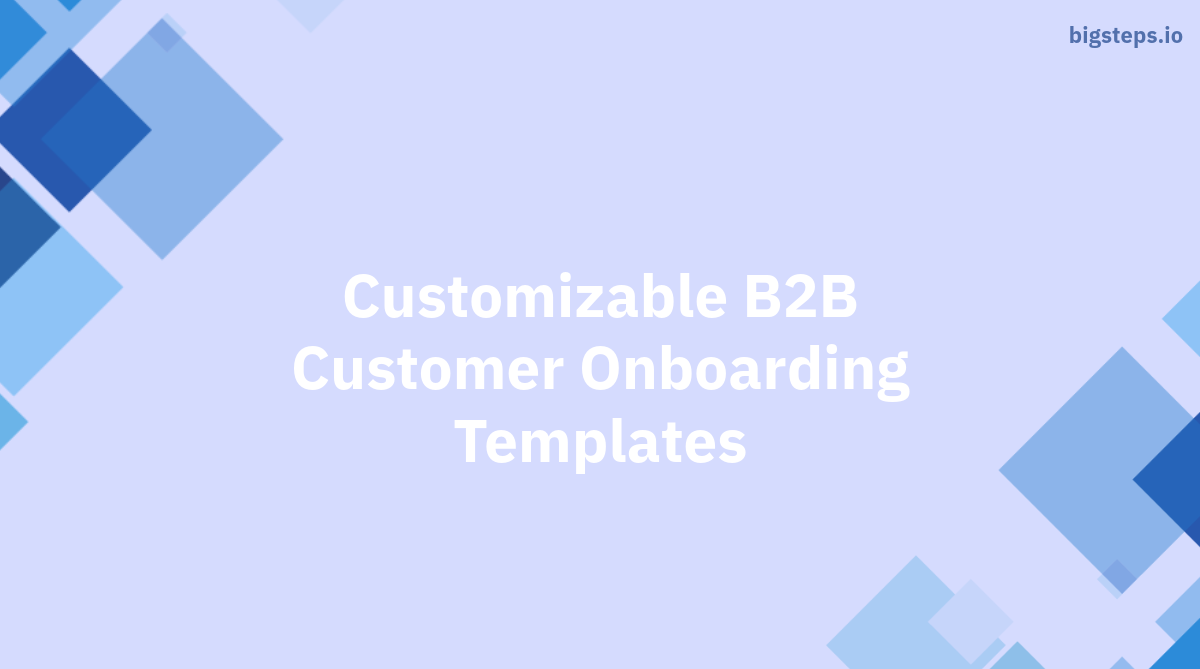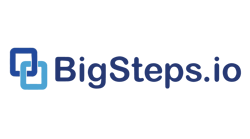Customizable B2B Customer Onboarding Templates
Read Time 3 mins | Written by: Vaibhav Awachat

Discover how customizable B2B customer onboarding templates can enhance efficiency and streamline your customer onboarding process.
Key Components of an Effective B2B Customer Onboarding Template
When designing a B2B customer onboarding template, it is important to consider the key components that make it effective. These components include:
- Clear and concise instructions: The template should provide step-by-step instructions on how to set up and use your product or service. This will help customers understand the onboarding process and reduce confusion.
- Relevant and personalized content: Customize the template to include information that is relevant to each customer's specific needs. This will help them see the value in your product or service and increase their satisfaction.
- Visual aids and examples: Incorporate visual aids such as screenshots, diagrams, or videos to make the onboarding process easier to understand. Use real-life examples to show customers how they can benefit from your product or service.
- Timely and proactive communication: Ensure that the template includes information on how customers can reach out for support or ask questions. Proactively reach out to customers to check on their progress and offer assistance if needed.
Designing Dynamic B2B Customer Onboarding Templates
Designing dynamic B2B customer onboarding templates allows you to cater to the unique needs of multiple projects. Here are some tips to help you design dynamic templates:
- Modular design: Break down your onboarding template into modular sections that can be easily customized and rearranged according to the specific requirements of each project.
- Variables and placeholders: Use variables and placeholders in your template to dynamically insert project-specific information. For example, you can use variables for customer name, project name, or any other relevant details.
- Conditional logic: Incorporate conditional logic in your template to show or hide certain sections based on the project requirements. This allows you to create a personalized onboarding experience for each project without cluttering the template.
- Version control: Implement version control to track and manage different versions of your onboarding templates. This ensures that you can easily update and maintain templates as project requirements evolve.
By designing dynamic B2B customer onboarding templates, you can save time and effort by reusing templates across multiple projects while still providing a tailored onboarding experience for each project.
Implementing Customizable B2B Customer Onboarding Templates
Implementing customizable B2B customer onboarding templates requires careful planning and execution. Here are some steps to help you implement these templates effectively:
- Identify common onboarding steps: Analyze your existing onboarding process and identify the common steps that can be standardized across different projects. These steps can form the foundation of your customizable templates.
- Customize templates for each project: Once you have identified the common steps, customize the templates to include project-specific information and requirements. This may involve updating variables, placeholders, or conditional logic.
- Test and iterate: Before rolling out the templates, test them with a small group of customers to ensure they are effective and user-friendly. Gather feedback and make necessary improvements based on the feedback received.
- Train your team: Provide training to your team members on how to effectively use and customize the onboarding templates. This will ensure consistency and efficiency in the onboarding process.
By implementing customizable B2B customer onboarding templates, you can standardize and streamline your onboarding process while still catering to the unique needs of each project.
Measuring the Success of Your Customized B2B Customer Onboarding Templates
Measuring the success of your customized B2B customer onboarding templates is essential to ensure continuous improvement. Here are some metrics you can use to measure the success:
- Time to onboard: Measure the time it takes for customers to complete the onboarding process. A shorter time to onboard indicates that the templates are effective in guiding customers through the process.
- Customer satisfaction: Gather feedback from customers about their onboarding experience. Use surveys or interviews to assess their satisfaction levels and identify areas for improvement.
- Product adoption: Track the rate of product adoption among onboarded customers. This metric indicates how well customers are understanding and using your product or service.
- Support requests: Monitor the number of support requests received during the onboarding process. A decrease in support requests over time suggests that the templates are providing sufficient guidance.
Regularly analyze these metrics and use the insights gained to make improvements to your customized B2B customer onboarding templates. This will help you optimize the onboarding process and enhance customer satisfaction.
